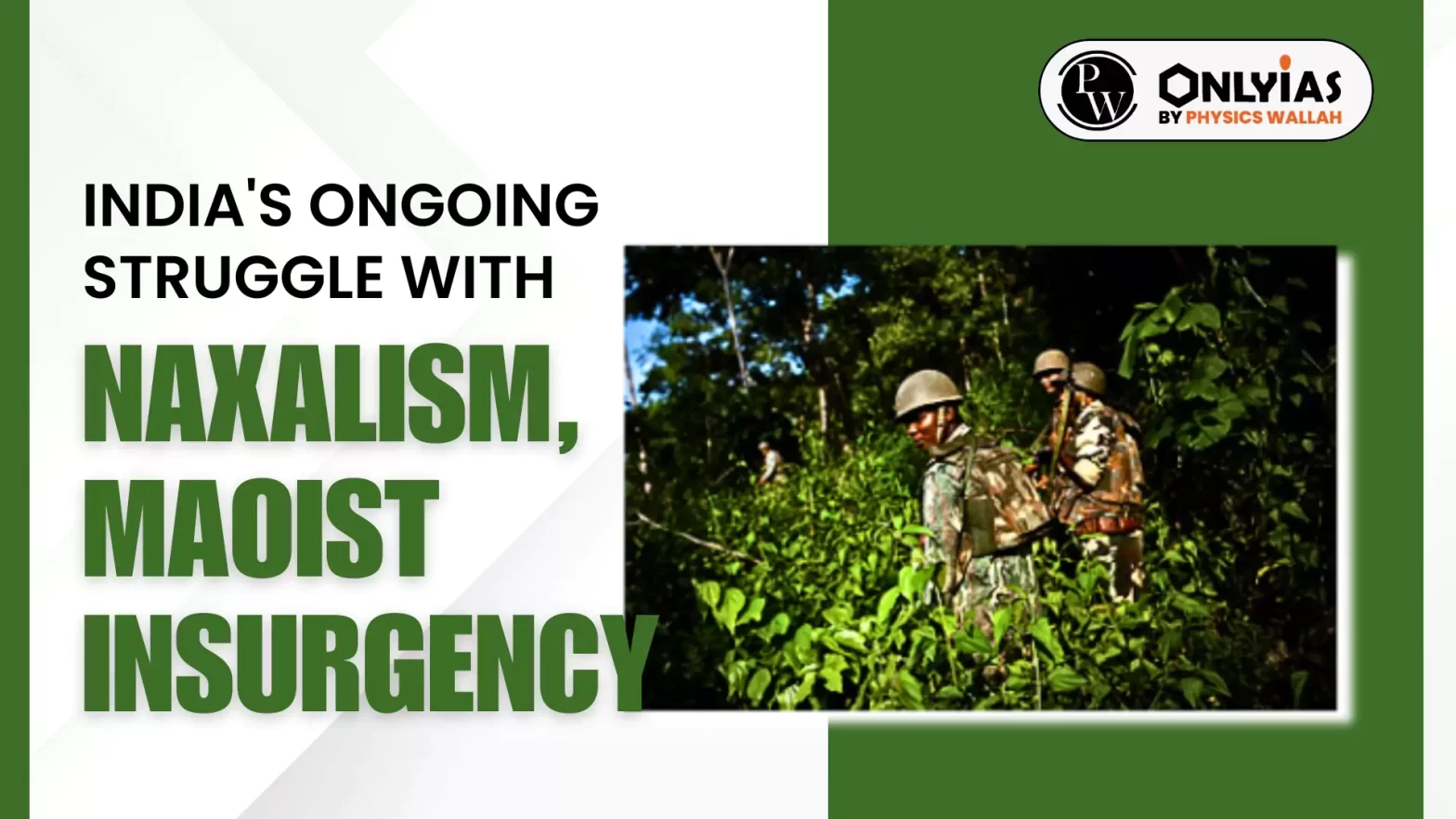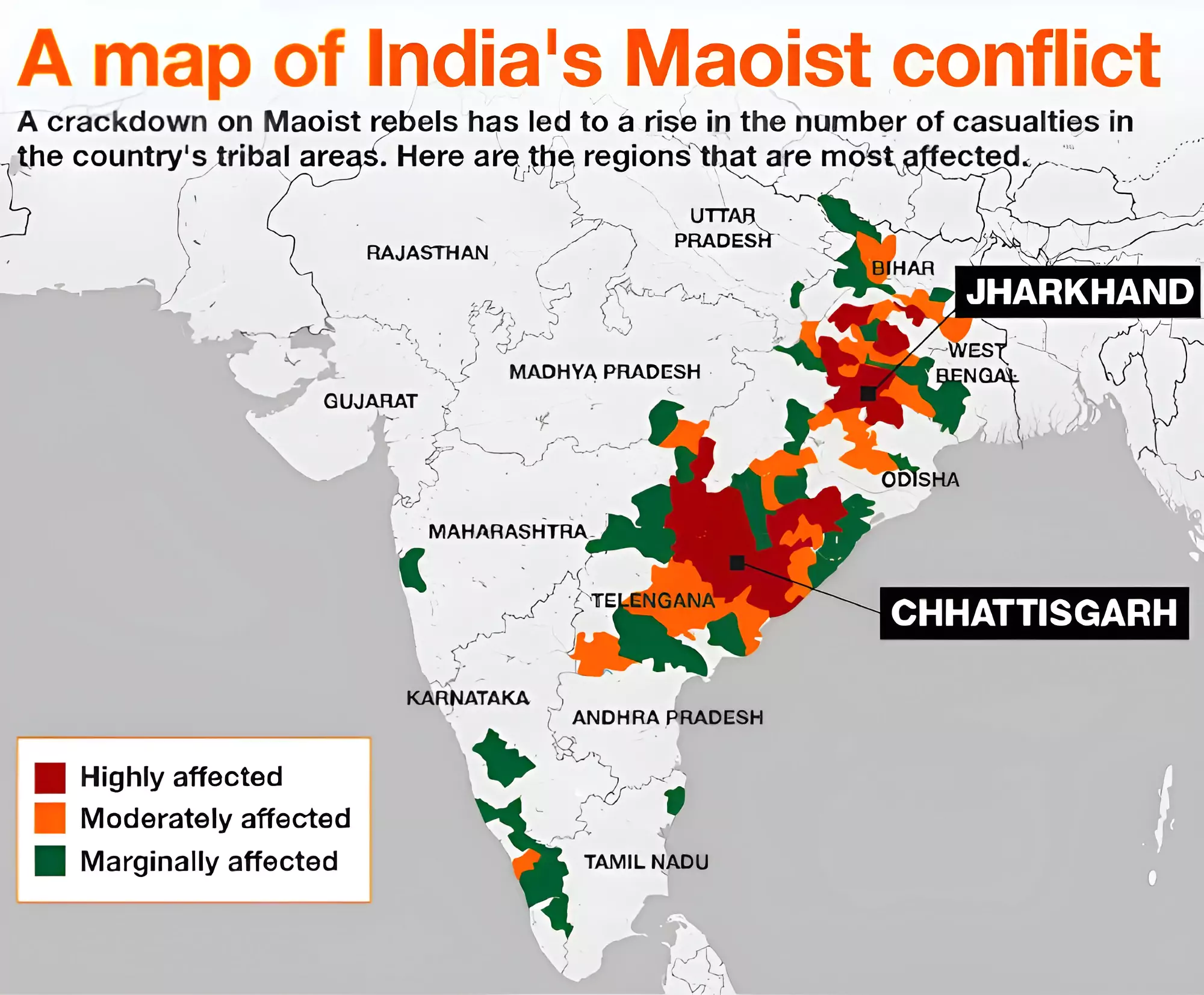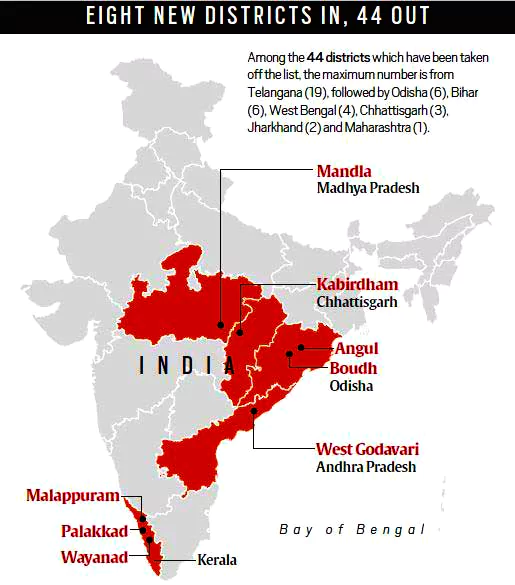![]() 19 Apr 2024
19 Apr 2024

Recently in one of the largest operations by security forces in Chhattisgarh,29 Naxalites have been killed in the Kanker area.
| Relevance For Prelims: Terrorism And Extremism, North-East Insurgency, Red Corridor Shrinks, and UAPA: Unlawful Activities (Prevention) Act.
Relevance For Mains: Maoism, Communism and Naxalism and Reasons for Naxalism in India |
|---|
Series of Blows to Maoist Insurgency: Recently, the insurgents suffered a series of blows from paramilitary and police forces, including the killing of at least 29 Maoists in the Bastar region in Chhattisgarh.
Geographic Limitations: Limited to the jungles of central India and in places of sparse tribal presence.
Ideological Decline: The Maoists have been significantly diminished as a political-ideological force with few takers for their party’s ideology.
Geographic Challenges: Maoists operate in difficult hilly terrain, posing challenges for security forces.
Support from Discontented Tribals: Maoists have shown the ability to win over some discontented sections of the tribals affected by the civil war.’

The Naxalism movement in India was sparked by a rebellion in 1967 in West Bengal against local landlords by working peasants.

Operation Green Hunt: Started in 2010, this aimed to minimize loss of human life by providing massive deployment of security forces in the affected regions.
Aspirational Districts Program, 2018: Launched in 2018, it aimed to rapidly transform districts that show progress.
Geographic Scope: The Red Corridor encompasses the central, eastern, and southern regions of India, which are severely affected by Naxalite-Maoist insurgency.
Present Situation: There has been significant improvement in the LWE security situation in the country over the last five years.
Significant Decline in 2022: Violent incidents in Naxal-affected States have decreased by 77% in 2022 compared to the peak observed in 2010.
Decrease in Affected Districts: The number of districts affected by Naxalite-Maoist insurgency has dropped from 90 to 45.
Decrease in Casualties: The number of deaths of security forces and civilians in Left Wing Extremism (LWE) violence has reduced by 90% in 2022 compared to the peak observed in 2010 (98 in 2022 from 1005 in 2010).
Historical Perspective (2004-2014): Between 2004 and 2014, there were 17,679 LWE-related incidents and 6,984 deaths.
Recent Trends (2014-2023): In contrast, from 2014 to 2023 (until June 15, 2023), there have been 7,649 LWE-related incidents and 2,020 deaths.
Innovative solutions: The government needs to find ways to locate armed groups in thick forests of the naxalism affected regions
Using local police: As they know the language and terrain of the region, they can be more effective than armed forces
Ensuring safety and development: Governments should focus not only on security but also on the all-round development of the region
Confusion Over Tackling Naxalism: There has been a debate on whether naxalism should be seen as a social issue or as a security threat
State Governments: State governments consider naxalism as a central government issue and do not take many initiatives to fight it.
Effective Intelligence: There is still a need to enhance technical intelligence so as to fight naxalites more efficiently.
Distribution of Resources: Naxal-affected areas are not developed and the government’s focus has been on military presence rather than Socio-Economic issues
Innovation: Need to develop innovate measures to tackle the menace of naxals.
State Governments: Should take the lead to fight naxals and take help from the central Government only if required.
Development and Security: Ensure the safety of the peace-loving people and finally work towards progress and development of the Naxal-affected regions.
The government’s program must be founded on principles of social justice and inclusive growth.
Effective implementation of socio-economic reforms and addressing the issue of Naxalism can only be achieved through concerted efforts within the legal and political framework.
| Must Read | |
| NCERT Notes For UPSC | UPSC Daily Current Affairs |
| UPSC Blogs | UPSC Daily Editorials |
| Daily Current Affairs Quiz | Daily Main Answer Writing |
| UPSC Mains Previous Year Papers | UPSC Test Series 2024 |
<div class="new-fform">
</div>
